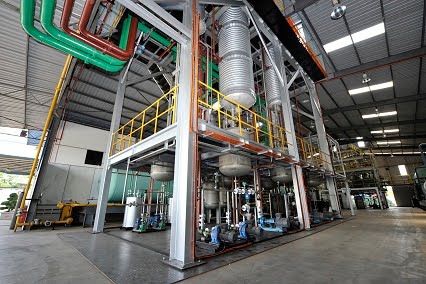During the Middle Ages, people developed techniques for extracting oil from aromatic plants, such as cloves, and herbs like rosemary, according to the National Cancer Institute. These oils contain components that make fragrances, natural and homeopathic treatments, and aromatherapy preparations. Simply crushing the leaves and stems yields a small amount of oil from some plants. Some fragile plant and aromatic substances require more complex extraction methods. The oil yield and composition also varies depending on the oil extraction method.
Distillation
Distillation is one of the oldest methods of extracting essential oils from plants and flowers. The process usually requires immersion of a plant substance—flowers, leaves or stems—in water, then heating up the container. When the water reaches a temperature that is high enough to produce steam, the pores of the plant open enough to release the essential oil. In some cases, the extraction process only exposes the plant parts to steam. The distiller collects the plant’s oil from the vapor that rises to the top of the container. As the vapor cools and condenses, the oil drips into a collection vessel inside the container. Distillation by this method results in chemical alteration of the plant’s properties and the fragrance of the essential oil produced.
Expression

Expression extraction releases the essential oils in citrus fruits. Scraping the outer skin of oranges, lemons and grapefruit ruptures a sac that holds the oil. Expression extraction does not use heat to release these oils because they are dispersed in the air. Expression requires a scraper or grater and a collection container into which the oils from the sacs drip when squeezed or pressed. These oils remain chemically identical to the oils found in the carrier fruits, and the smell is usually unchanged.
Supercritical Solvents
The use of solvents to extract essential oils from plants and resins is a modern technique that increases the yield of oil from many plants. Carbon dioxide, or CO2, is a popular solvent for essential oil extraction, according to the University of Minnesota. This method also retains the original chemical structure of the oil and extracts additional compounds from the plant material that distillation and expression do not produce. The process is more expensive but highly efficient. It takes place in a closed chamber because the extraction process requires heating the CO2 and increasing the pressure in the chamber to convert the CO2 to the supercritical state that makes it a solvent, according to the website AltMD.
